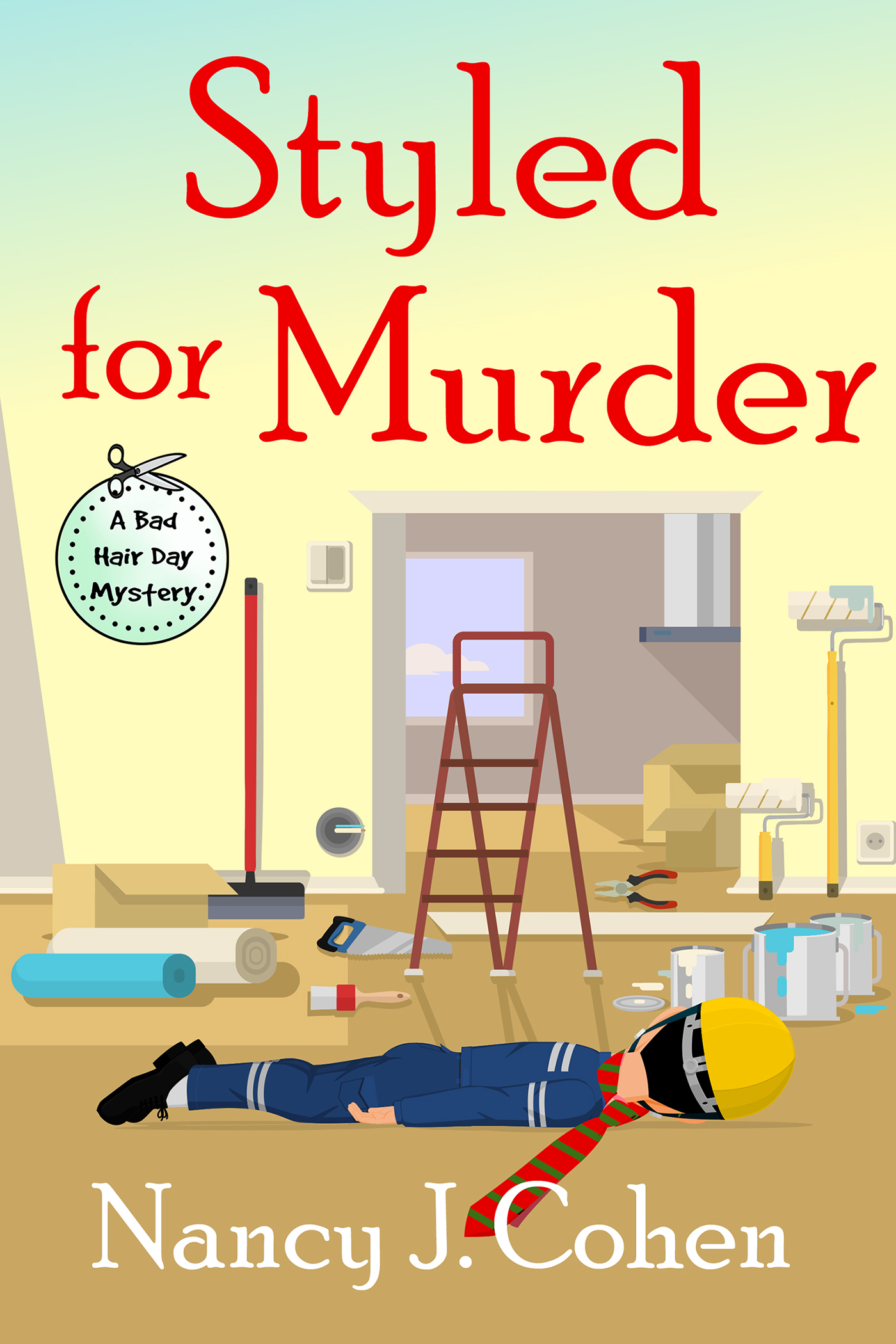Editing a manuscript is a critical stage in the writing process. In an earlier post, I discussed the Five Stages of Writing. Currently, I’m in the editing or revisions phase with one book and the production phase of another. This often happens, because finishing the first draft of a book doesn’t mean you’re done. It’s only the start of more work.
After my draft is complete, I begin an intense round of line editing. This means reading the printed pages word-by-word through the manuscript to tighten sentence structure, catch repetitions, fill in emotional reactions, add dialogue tags and more. Here is an example of what one page looks like from Easter Hair Hunt, #16 in The Bad Hair Day Mysteries.
I scribble changes on the printed page, then go back to the computer and make the fixes. Like this:
Then I read through it again. Note one paragraph here has the same word, “staff”, three times. In the second round, I changed the middle one to “employee” entrance. This means another session at the computer and another printout.
I read it again and keep doing this process until each page is as perfect as I can make it. For revision tips, see my previous post here.
The next step is to send it to my freelance editor. She’ll return the file with remarks using Track Changes in Word. Here comes another round of corrections and one more read-through to make sure all is smooth and I didn’t miss anything. For traditionally published authors, they’ll get edits from their developmental editor and their copy editor.
Next round? For indie authors, that’s beta readers. These are ordinary readers like you who read the book the way they would any story. But they’re looking for flaws, misspellings, info dumps, inconsistencies, or anything that would give them pause. Their input is invaluable, and they always find new things for me to modify.
Is the book done yet? Nope. From here it goes to my formatter. Once she converts the file, I have to read through it again to look for conversion errors. This is akin to the advance reading copy that traditionally published authors receive. It’s the last chance for a final proofread.
This is why the editing process can take so long. I set myself a goal of 10 pages a day. For a 300 page manuscript, that’s 30 days with no time off. Sometimes after several rounds and numerous changes during one day, I still can’t finish those ten pages. I get too close to the material and have to put it aside until the next morning.
So please be patient, dear readers, if it takes longer for me to produce a book. I want it to be as perfect as possible by the time it reaches your hands. Or at least, the hands of my early reviewers. That’s a whole other topic.
Unfortunately, no matter how many passes we make through a book, including our editors and beta readers, some errors will slip by. It’s only diligent readers who can point them out to us. If you see them, please communicate in a kindly manner directly to the author via private email. Depending on our publishing status, we may or may not be able to fix these mistakes. Your eye for detail will be appreciated as long as you understand that most of us really do try our best.
What is The Editing Process? It's a critical phase in writing a novel. #amediting #amwriting Share on XDo you get annoyed by occasional typos in the books you read, or do you accept them as inevitable and keep reading? Feel free to leave a comment below.
4 thoughts on “The Editing Process”
Comments are closed.


























I also use Word’s Read Aloud feature so I can hear the book. Not only will the computer read the errors your eye skips over, but it reveals those “clunkers” of repeated words, or singsong cadence, too much alliteration.
Yes, you are right Terry. I forgot to mention this feature. Also the use of Smart-Edit as another tool.
You are so right, Nancy. It takes me at least three edits to get to where I need to be. However, do errors in a book bother me? Only if they’re careless and repetitive. A little bump in the road isn’t enough to stop the journey.
Yes, I agree with you about the bumps, Lois. Not to mind if there are a few. More bothersome if they become repetitive.